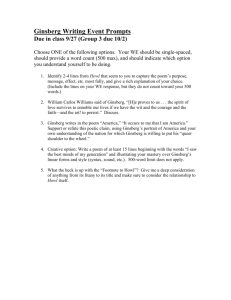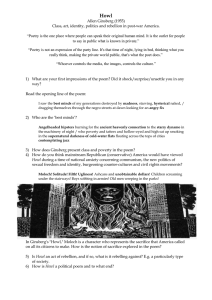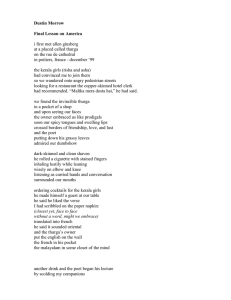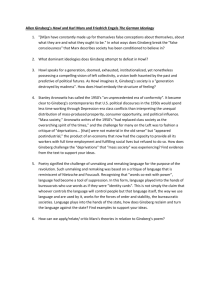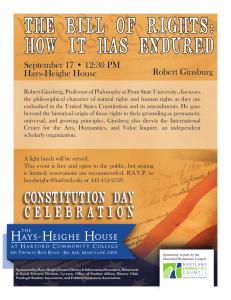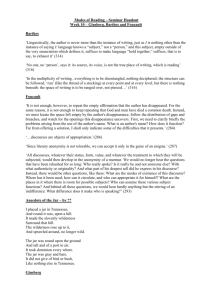Allen Ginsberg's Howl Starter:
advertisement
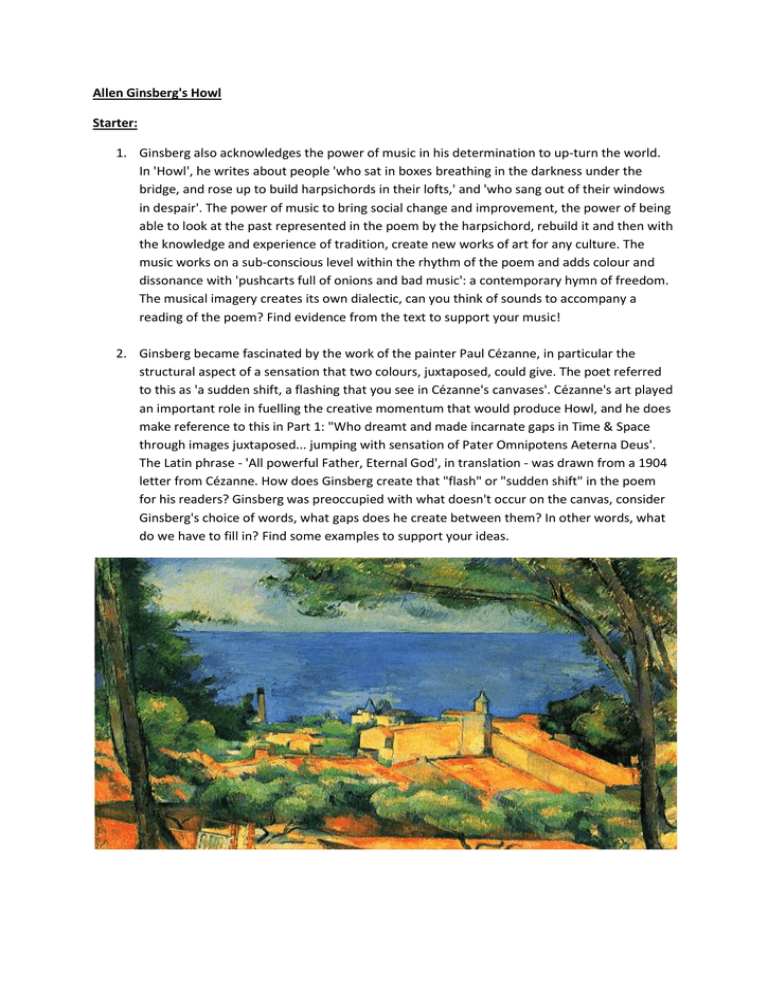
Allen Ginsberg's Howl Starter: 1. Ginsberg also acknowledges the power of music in his determination to up-turn the world. In 'Howl', he writes about people 'who sat in boxes breathing in the darkness under the bridge, and rose up to build harpsichords in their lofts,' and 'who sang out of their windows in despair'. The power of music to bring social change and improvement, the power of being able to look at the past represented in the poem by the harpsichord, rebuild it and then with the knowledge and experience of tradition, create new works of art for any culture. The music works on a sub-conscious level within the rhythm of the poem and adds colour and dissonance with 'pushcarts full of onions and bad music': a contemporary hymn of freedom. The musical imagery creates its own dialectic, can you think of sounds to accompany a reading of the poem? Find evidence from the text to support your music! 2. Ginsberg became fascinated by the work of the painter Paul Cézanne, in particular the structural aspect of a sensation that two colours, juxtaposed, could give. The poet referred to this as 'a sudden shift, a flashing that you see in Cézanne's canvases'. Cézanne's art played an important role in fuelling the creative momentum that would produce Howl, and he does make reference to this in Part 1: "Who dreamt and made incarnate gaps in Time & Space through images juxtaposed... jumping with sensation of Pater Omnipotens Aeterna Deus'. The Latin phrase - 'All powerful Father, Eternal God', in translation - was drawn from a 1904 letter from Cézanne. How does Ginsberg create that "flash" or "sudden shift" in the poem for his readers? Ginsberg was preoccupied with what doesn't occur on the canvas, consider Ginsberg's choice of words, what gaps does he create between them? In other words, what do we have to fill in? Find some examples to support your ideas.
